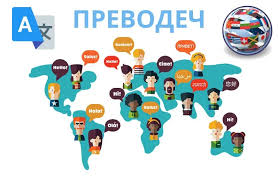Introduction
The foundation of international communication is translation, which helps people and organizations overcome linguistic and cultural barriers. Due to the convergence of various languages and dialects in both digital and physical areas, there is a greater need than ever for translation services in today’s interconnected world. Among the various tools and methods employed in translation, one term stands out: “kääntäjäö.”
Origins and Evolution
To comprehend the meaning of “kääntäjäö,” it’s fundamental to dive into the authentic foundations of interpretation. The act of deciphering texts goes back hundreds of years, with old developments like the Egyptians, Greeks, and Romans taking part in etymological trade to disperse knowledge and thoughts across borders. Over the long run, interpretation advanced from manual cycles to refined frameworks, finishing in the development of computerized stages and man-made brainpower.
The expression “kääntäjäö” begins from Finnish, a language prestigious for its remarkable construction and rich phonetic legacy. In Finnish, “kääntäjä” signifies “interpreter,” while the annexed “ö” adds a particular bend, maybe demonstrating a unique quality or trademark related to the interpreter.
Characteristics of “kääntäjäö”
What sets “kääntäjäö” aside from different types of interpretation? At its center, a “kääntäjäö” encapsulates a profound comprehension of both the source and target dialects, rising above simple semantic capability to incorporate social subtleties and setting. Unlike robotized interpretation devices, which frequently battle with informal articulations and social references, a “kääntäjäö” has the responsiveness and instinct expected to convey meaning precisely across dialects.
Moreover, “kääntäjäö” isn’t restricted to customary techniques for interpretation. In the present computerized age, innovation assumes a vital part in the interpretation cycle, with interpreters utilizing a horde of devices and programming to upgrade proficiency and exactness. From Feline (PC Helped Interpretation) instruments to AI calculations, “kään-täjäö” consistently incorporates innovation into their workflow while keeping up with the human touch that recognizes their specialty.
Role and Significance
The job of a “kääntäjäö” stretches out a long way past the basic demonstration of switching words starting with one language over completely and then onto the next. They act as social ministers, working with correspondence and understanding among people and networks with particular phonetic and social backgrounds. In the domain of business, “kääntäjäö” assumes an essential part in empowering organizations to grow their venture into worldwide markets, guaranteeing that marketing materials, item portrayals, and authoritative reports are precisely meant to reverberate with ideal interest groups.
Besides, “kään-täjäö” assumes an essential part in safeguarding social legacy and semantic variety. By deciphering abstract works, authentic records, and strict texts, they guarantee that the voices and accounts of various societies are safeguarded and imparted to people in the future. In our current reality where dialects are continually developing and imperiled dialects face the danger of annihilation, the work of “kääntäjäö” takes on added importance in shielding etymological variety.
FAQs (Frequently Asked Questions)
1. What qualifications and skills are required to become a professional “kääntäjäö”?
Becoming a skilled ‘kääntäjäö’ requires strong proficiency in both source and target languages, along with deep cultural understanding. Translators often study translation or linguistics and specialize in fields like law or medicine.
2. How do “kääntäjäö” ensure accuracy and quality in their translations?
“Kääntäjäö” utilizes different quality affirmation measures, including intensive exploration, interviews with well-informed authorities, and fastidious editing and altering. Moreover, they might utilize interpretation memory apparatuses and glossaries to keep up with consistency and exactness all through their interpretations.
3. What are the main challenges faced by “kääntäjäö” in their work?
Language hindrances, social contrasts, and specialized language are normal difficulties experienced by “kääntäjäö” in their work. Moreover, quick mechanical headways and the expansion of machine interpretation present continuous difficulties for interpreters, who should consistently adjust to new devices and systems.
4. How do “kääntäjäö” navigate the ethical considerations of translation?
“Kääntäjäö” comply with proficient norms and moral rules laid out by interpretation affiliations and associations. They ensure privacy, respect cultures, and convey original meaning accurately.
5. What role does technology play in the work of “kääntäjäö”?
Tech aids ‘kääntäjäö’ with terminology and machine translation, but humans are essential for understanding nuances.
Future Trends
Looking forward, the eventual fate of interpretation holds both commitment and vulnerability. Machine translation advances offer speed and efficiency, but raise concerns about human translators’ role and loss of nuance.
In this evolving landscape, ‘kääntäjäö’ remain vital as guardians of language and culture. While technology streamlines translation, human involvement is essential for capturing nuances and conveying message essence. Thus, the future of translation likely involves a balanced human-machine relationship, with ‘kään-täjäö’ guiding the process for accuracy and authenticity.
Conclusion
In conclusion, “kääntäjäö” addresses the exemplification of interpretation greatness, typifying a mix of semantic ability, social understanding, and mechanical sagacious. As the world turns out to be progressively interconnected, the job of “kääntäjäö” in working with multifaceted correspondence and protecting etymological variety couldn’t possibly be more significant. By embracing the difficulties and chances of the computerized age, “kään-täjäö” will keep on filling in as essential middle people in a globalized world, crossing over partitions and encouraging comprehension across dialects and societies.




